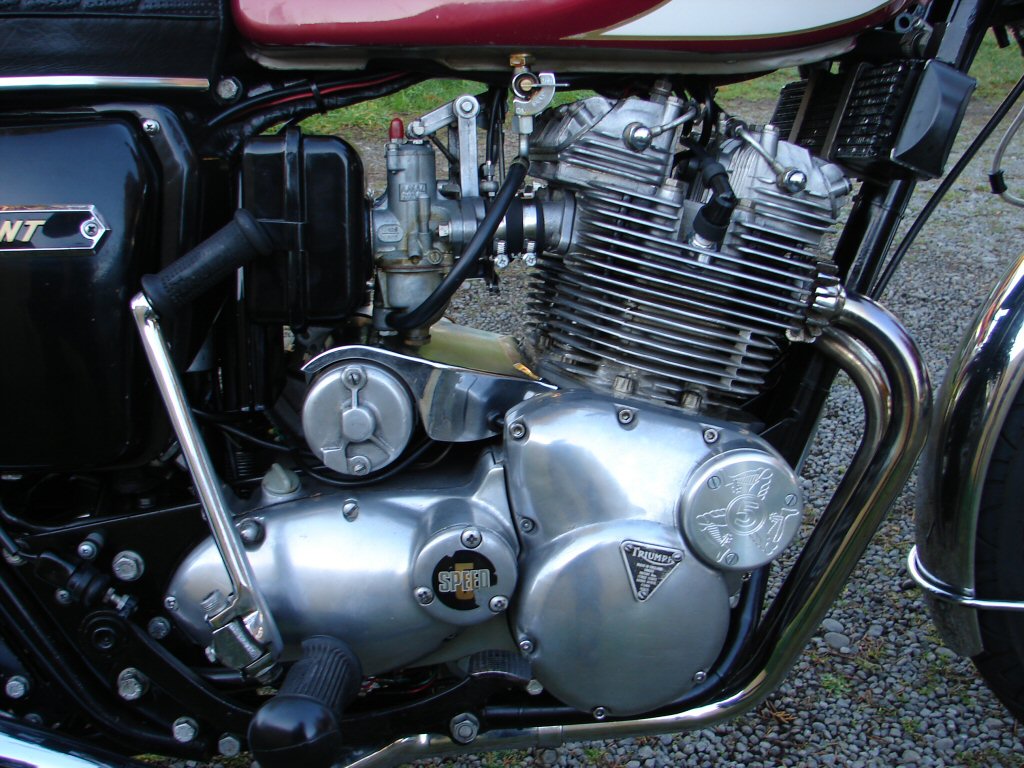June 2021
1975 Triumph T160 Trident 750
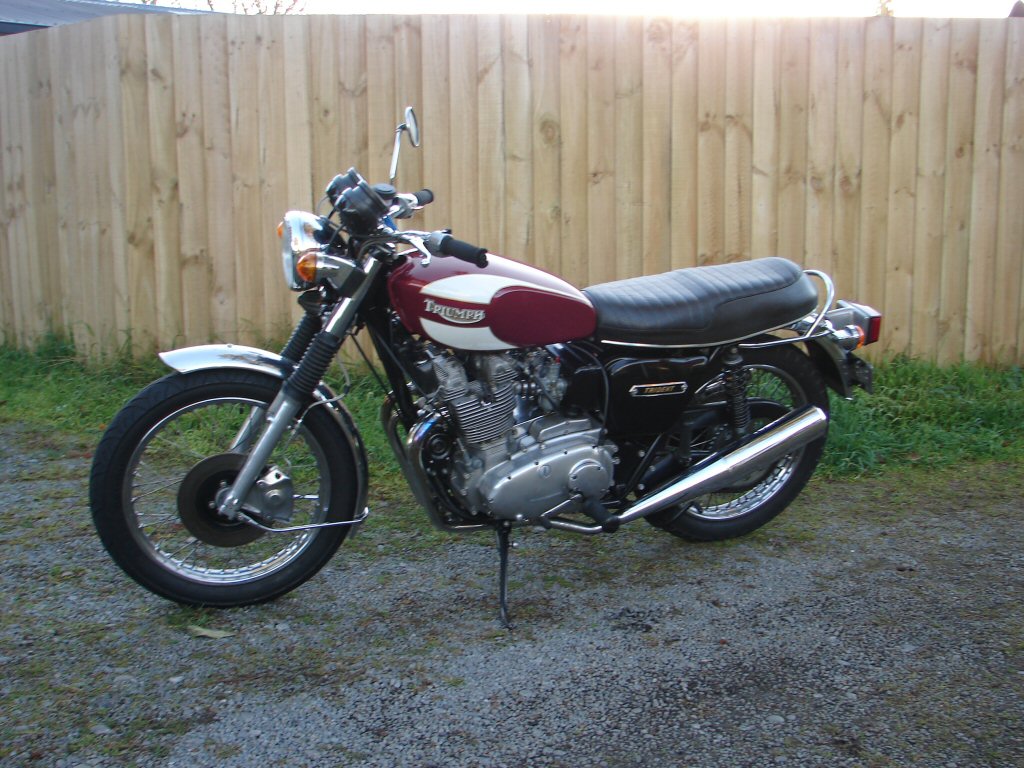
My mate's T160 was not starting well on the electric foot, and like me he figures - if its going to be a weight penalty then it needs to earn its keep.!
We had attended to the starter previously but there was still a problem, so a Trispark ignition unit was to be fitted. This was the later type Trispark setup with the electronics included in the pickup unit and mounted in the timing cover. It requires running new wires to power the unit, but saves on space further aft by not having a black box, and the wiring comes with it.
I believe there was a Boyer fitted at the time, but the points cover would suggest that it once may have had a Lucas Rita.
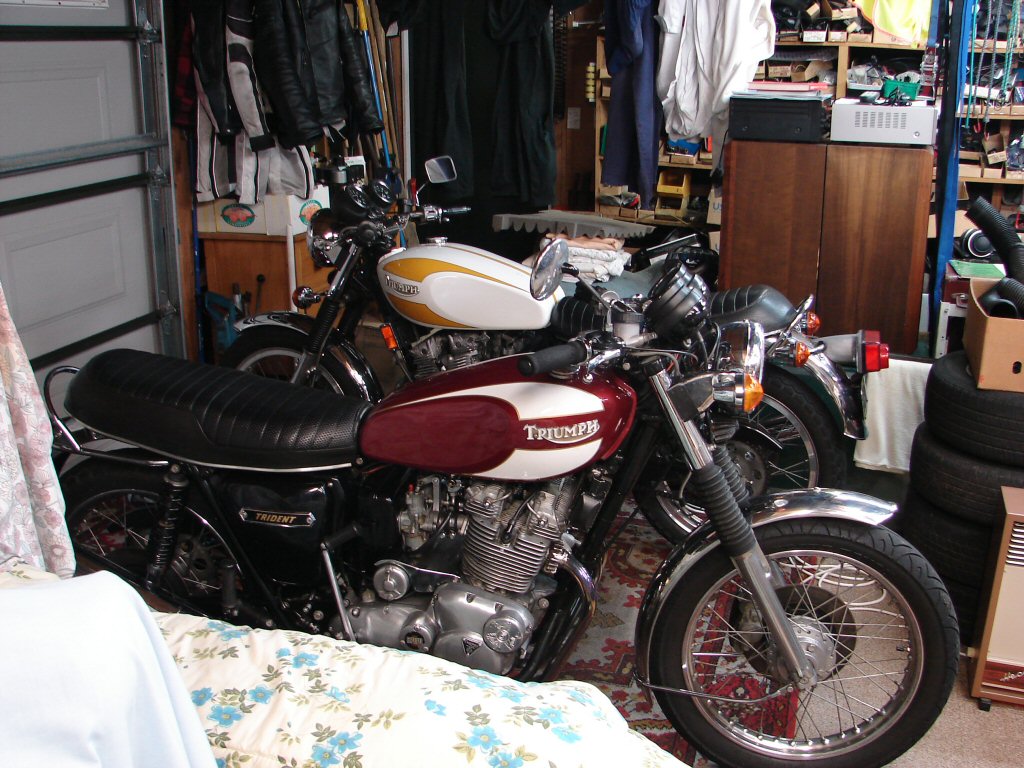
After removing all the original wiring to coils and ignition unit the Trispark gets timed and fitted in its new home. I have not noticed any difference in performance between the two types of Trispark setup, but both benefit from fitting an ignition relay to optimise delivery of battery voltage. As I had previously fitted one to try and improve starting performance we could cross that off.
However, the majority of the work required is always in the battery area where everything connects to everything else, including the relay.
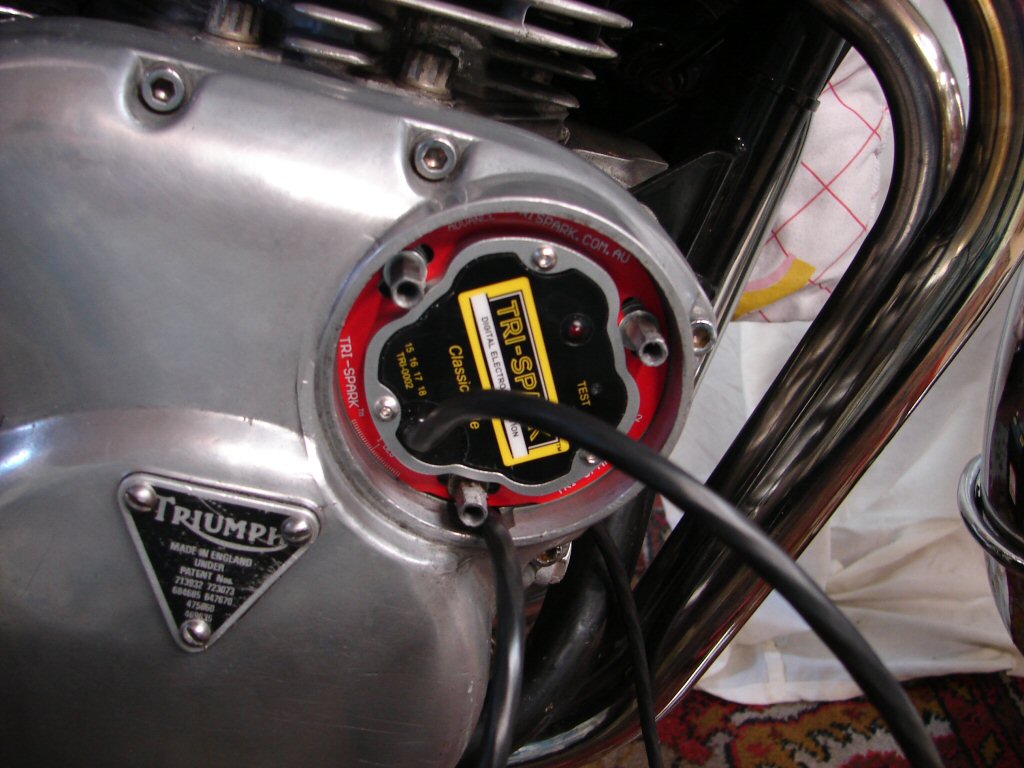
Being a tad obsessive I do not trust anyone's wiring but my own. Well, I have spent 57 years in the electrical/electronics industry so I guess I picked up how to make such things work reasonably well. Connections are always the main source of problems, let alone on a machine that vibrates like a mad thing, so using high quality fittings and more than adequate wire is the best insurance.
I hence stripped most of the previous wiring effort in this area and did it again. Even though this is incomplete, the idea - as the Japanese found - is to leave nothing to chance. Support every wire as thoroughly as you can. It won't go anywhere if it has no choice.
Starter relay below battery tray, ignition relay to the right. All connectors replaced with see-through insulated steel crimp terminals. The brass type lose their grip with age.
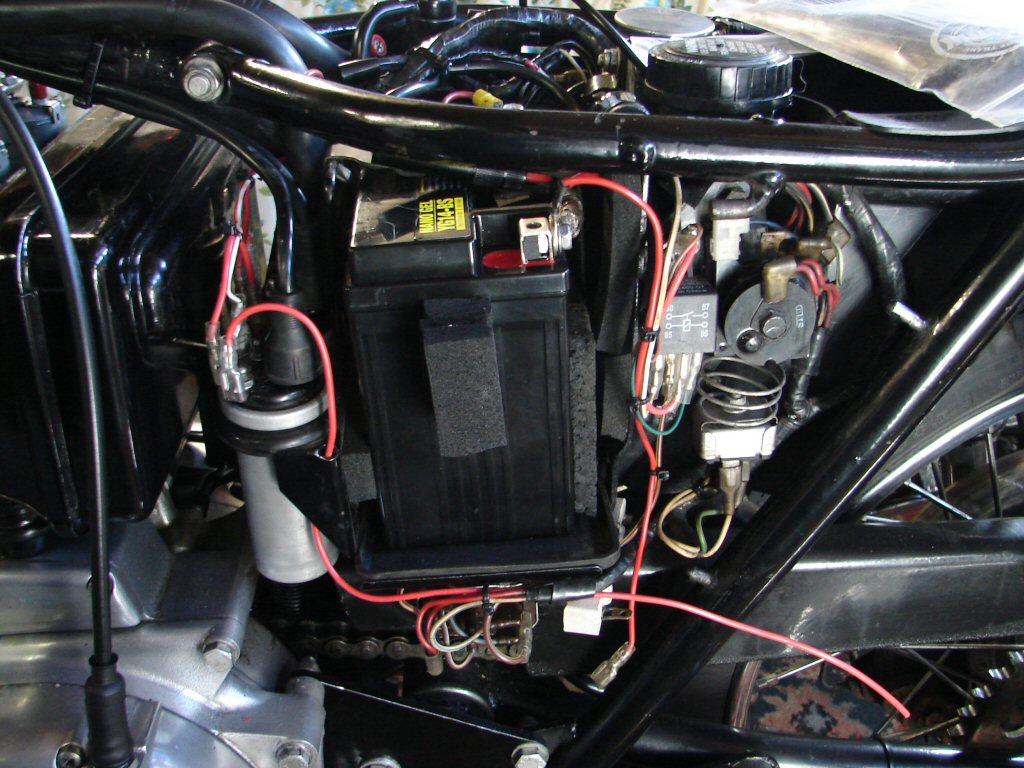
The small ballast resistor under the right corner of the battery tray was an original fitment on T160's as they used 6 volt coils which followed car industry practice. This allows higher voltage to be applied to the coils while the starter is in use. The original had been discarded on this bike hence a new one fitted in the above pic.
The finished article with nothing out of place and a working electric start.
